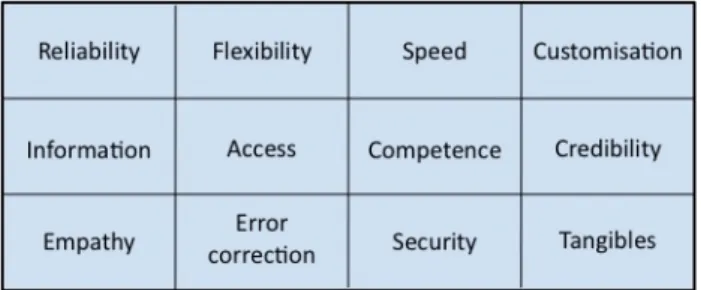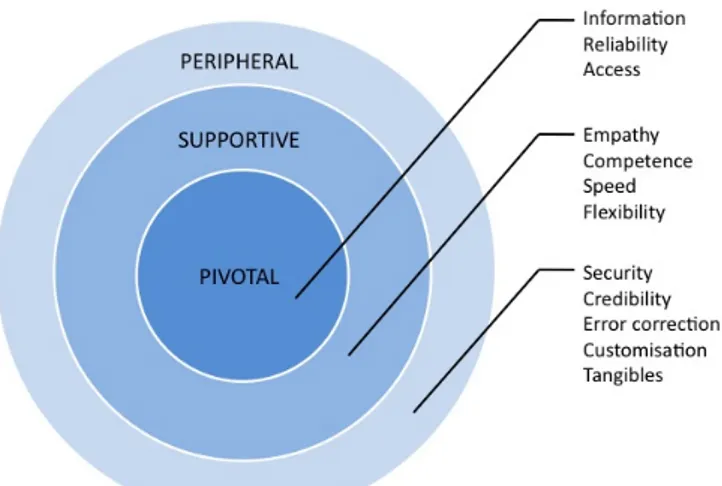Andreas Alfredsson & Patrik Hansson Department of Industrial Management and Logistics Faculty of Engineering, Lund University 2010 Introduction
This article is based on a master thesis conducted at Volvo Parts in 2010. The project concerned an analysis of potential benefits of a new coordinated inventory control model and evaluation of customer service related performance.
Background
Volvo Parts AB is a business unit within the Volvo Group that provides support and services for the aftermarket. Their objective is to maximise the uptime of Volvo Group products for the end users by providing support and ensuring availability of spare parts.
The master thesis was a part of an inventory control research collaboration between NGIL (Next Generation Innovative Logistics) and Volvo Parts. The purpose of the collaboration was to investigate the potential of coordinated control in Volvo Parts’ distribution structure. Prior studies within the project had indicated potential for significant reductions of inventory related costs while fulfilling determined target service levels to customers. The thesis was a continuation of the project and aimed to evaluate the potential benefits further.
Excellent customer service involves more than providing sufficient availability of articles. Customer expectations and requirements are today higher than ever before, much due to the ease of access of products and
services from companies all over the world. Enhancing customer service has become a way for companies to differentiate themselves and to gain competitive advantages (Seth et al. 2006). The thesis aimed to identify what areas Volvo Parts should focus on in order to improve their service to customers.
Objective
The objective of the master thesis was to evaluate the potential of coordinated inventory control at Volvo Parts and to investigate possible improvements of the company’s customer service.
Methodology
To handle the diverse objectives of the thesis a mixed method approach was employed. The potential benefits of coordinated inventory control was analysed through a quantitative simulation study with the model provided by NGIL. A customer service related modification of the assumptions that the model was based on was also conducted to strengthen its suitability for Volvo Parts’ specific organisation.
The evaluation of the customer service performance was carried out through qualitative research involving a literature study and a series of interviews with several of Volvo Parts’ dealers. The literature study was performed in order to define the basic concept of customer service and the interviews were conducted to gain knowledge of what specific areas that
were most important for Volvo Parts to focus on. The interviews were of a semi‐ structured nature to capture the respondents’ opinions without the unwanted influence of leading questions.
Theoretical frame of reference
The NGIL model has been developed specifically for Volvo Parts’ distribution system.
The dealers face demand from end customers and replenish their stock from a central warehouse (CW). In case of stockout at the dealer an urgent order is placed at the local support warehouse (SW) and a transshipment cost is charged for the extra transport and handling.
Figure 1. Model structure
The purpose of the model is to provide optimal or near optimal reorder points for the dealers and the SW that fulfils a set of determined service constrains. In other words, to minimise the total cost (holding and transshipments) while providing sufficient availability to end customers. The difference from the current solution is that all reorder points in the system are optimised jointly instead of one by one. For details regarding assumptions and calculations see Axsäter et al. (2010).
In the qualitative study, the literature review provided a foundation for determining the aspects included in the concept customer service. The much‐ cited work of Parasuraman et al. (1985)
has had a strong influence on the literature and consequently a link can be found also to our research. We defined customer service as a concept consisting of 12 general dimensions (figure 2). Figure 2. The 12 dimensions of customer service Results & Analysis
The simulation study was used to compare the current inventory control solution to the NGIL model in a realistic context. The results indicate that the NGIL solution holds a substantial cost reduction potential with total cost cuts of more than 25%. The service performance that previously had been far above the determined target levels was more in line with the objectives. However, when examining the results further some problems were uncovered. The model rendered some solutions that appeared to be unrealistic stockholding policies to implement in practice. For example, some low‐price and fast moving articles were provided mainly from the SW. The reasons behind this were associated both with the input and the assumptions of the NGIL model.
In an effort to improve the feasibility of the results a modification of the NGIL model was performed. The articles were classified by frequency, price and type into 12 different segments. Each segment was then assigned a number between 0 and 1 corresponding to the fraction of customers that would be satisfied despite having to wait for their requested article to be delivered from the SW (generally a lead‐time of one
day). This number was previously assumed to be 1 for all articles.
The modification resulted in a slightly smaller cost reduction, 22.8%, but improved the service performance and the logical appeal of the solution.
After the interview study a quantification of the results was performed to get an overview of how Volvo Parts’ dealers perceived and valued the different dimensions of customer service. The results of the quantification process, in combination with our own opinions and knowledge gained throughout the study, constituted the foundation for the development of a classification model (figure 3). The model visualises which areas Volvo Parts should focus on in order to improve the performance, and consequently the customers’ perceptions, of their customer service.
Figure 3. Model describing our classification of the customer service dimensions.
The model consists of three levels describing different degrees of significance to Volvo Parts’ customer service. The pivotal dimensions were the most critical to focus on in order to improve and maintain a high level of customer service and, on the other side of the spectrum, the dimensions classified as peripheral held the lowest
potential for improvement of the total customer satisfaction.
The dimensions we considered pivotal were information, reliability and access. In the information dimension, the main improvements possibilities concerned information to dealers about delivery times and notifications about problems occurring in the regional warehouse in Gothenburg. Reliability issues were mainly associated with deliveries of urgent orders. Problems discussed regarding access concerned limited opening hours of the order office and the occurrence of unavailable contact personnel at certain times of the day.
Conclusions
The simulation results after the modification of the NGIL model proved that minor adjustments can increase the suitability of the provided solution significantly. We recommend Volvo Parts to:
1. Evaluate alternative ways to calculate cost parameters, since the current method in our opinion is somewhat unrealistic and could limit the decision model.
2. Decide how the assumptions in the model can be modified to best fit their organisation. 3. Perform a pilot study to evaluate how the model performs in a real business environment. To summarise, we believe that the NGIL model holds substantial cost reduction potential if utilised correctly by Volvo Parts.
Volvo Parts needed to improve the information provided to dealers about delivery times, primarily concerning urgent orders. This kind of information must: (1) be provided in time and (2) be
dependable. Improvements in this area could be achieved through increased communication and cooperation between the order office and concerned parties. Problems in the regional warehouse that potentially could result in delayed deliveries should be communicated to concerned dealers in time. By establishing standardised work routines, this issue should be manageable. The accessibility of Volvo Parts’ order office could be increased by, for example, adopting different lunch hours for different groups of people and by scheduling department meetings outside operating hours. However, due to the increasing customer requirements in this area, one can not rule out that the opening hours sooner or later might need to be extended.
As a part of our recommendations related to customer service we presented some complementary and alternative metrics purposed to enhance the customer focus and provide a more holistic view of the customer service performance. The most important were:
• Perfect order fulfilment
• Modification of the current metric Dealer Service Index
• Urgent order leadtime
For further and more detailed information and conclusions, see Alfredsson and Hansson (2010). References Nitin Seth, S.G Deshmukh & Prem Vrat “A framework for measurement of quality of service in supply chains” 2006 Sven Axsäter, Johan Marklund & Christian Howard – 2010 “A distribution inventory model with transshipments from a support warehouse” Parasuraman, Berry & Zeithaml – 1985 “A Conceptual Model of Service Quality and Its Implications for Future Research” Andreas Alfredsson & Patrik Hansson – 2010 “Coordinated inventory control and customer service performance at Volvo Parts”

